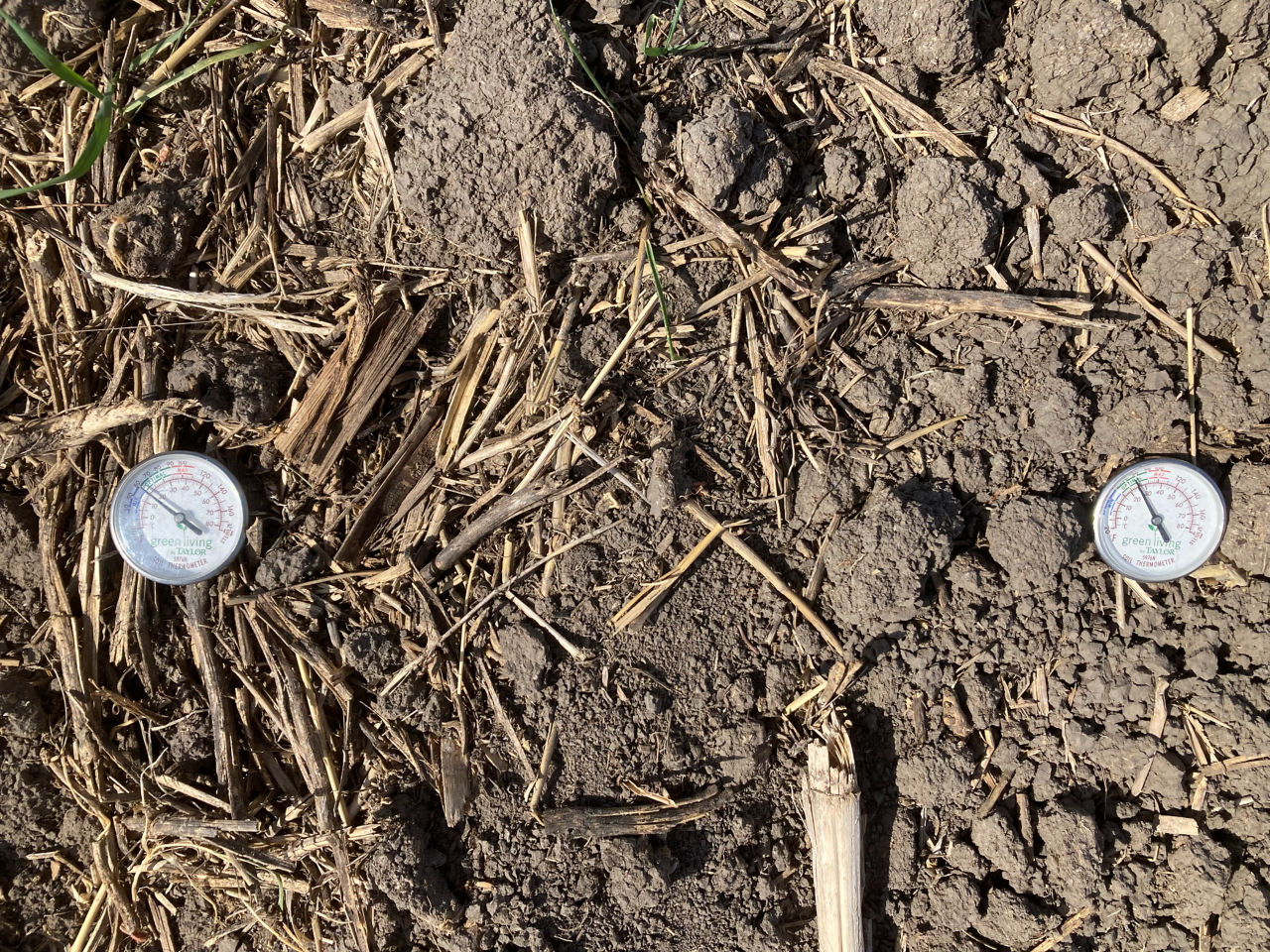The Effect of Strip-Tillage on Topsoil Temperature
April 2, 2023
TRIAL OBJECTIVE
- Tillage can affect topsoil temperature and moisture by removing crop residue cover. This might benefit crop establishment, especially in early planting dates.
- The objective of this study was to compare topsoil temperature between a no-till and a strip-till conservation tillage system during the early spring planting season.
RESEARCH SITE DETAILS
- The study was located at the Gothenburg Water Utilization Learning Center during the spring of 2022.
- The soil type is a Hord silt loam comprised of approximately 60% silt, 20% clay, and 20% sand.
- Two exact tillage methods were used with two different crop residue species (corn and soybean).
- The experimental design was a randomized complete block with four replications. Plots were 100 ft long by 10 ft wide.
- Two tillage methods (no-till and strip-till) were evaluated.
- The undisturbed and non-trafficked spaces between strip-till rows were used as our no-till treatment to reduce soil variability.
- Soil temperature from the top four inches was measured using a Taylor® gauge.
- From April 14th to May 19th, 2022.
- Every seven days at the same time (around 4:00 pm).
- Average from eight readings per tillage treatment per measurement date.
UNDERSTANDING THE RESULTS

Figure 1. Average topsoil temperature measured under soybean residue (left) and corn residue (right) in no-till and strip-till systems.
- Early in the planting season, the difference in topsoil temperature between strip-till and no-till was negatable. However, the difference increased between the two residues by 10 °F by the end of April (Figure 1).
- There were clear differences when comparing crop residue type after May 5th. For corn residue, the topsoil temperature difference between no-till and strip-till kept constant until the completion of the measurements. In contrast, this difference became smaller under soybean residue.
- In general, a minimum soil temperature (around 50 °F for corn) is required to avoid slow and uneven seed germination. Removing part of the crop residue by using a strip-till machine helped to reach this soil temperature a few days earlier. While soybean can germinate at 50 °F, germination is more consistent at soil temperatures of 77 °F.

Figure 2. Topsoil temperature gauge measuring under soybean residue (left) and on a strip-till row (right). Photo taken on 4/28/2022 at the Gothenburg Nebraska Bayer Learning Center.
KEY LEARNINGS
- The strip-till conservation tillage system may be helpful when a higher soil temperature is needed, especially for early planting dates.
- More research is needed to understand the interaction between crop residue type and tillage practice on topsoil temperature.
- Farmers should work with their local sales team member to help identify the best management practice and products for their production systems. Seed treatment options may be considered for those products planted first under colder soil conditions.
1010_202450